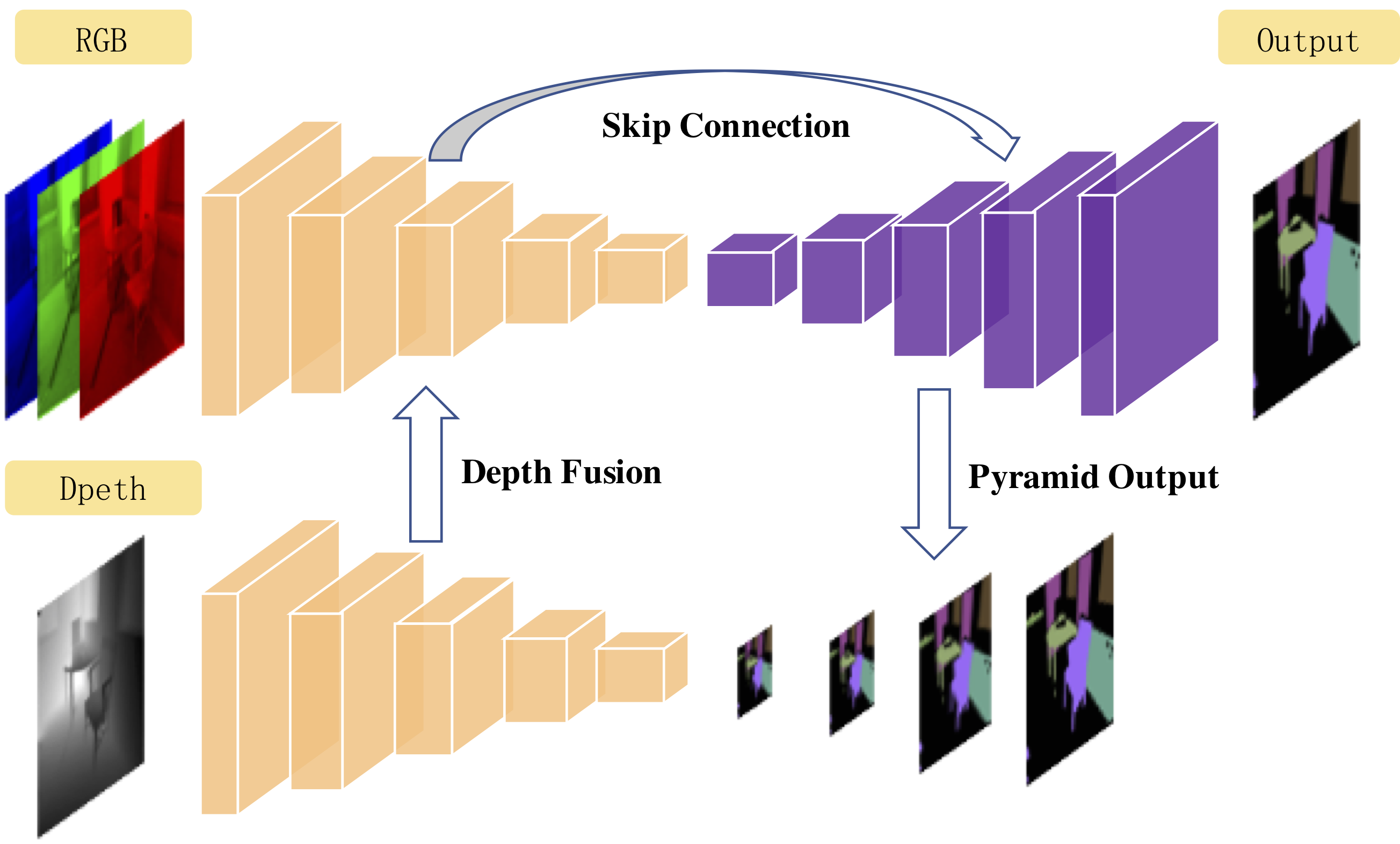This repository contains the official implementation of the RedNet (Residual Encoder-Decoder Architecture). It turns out that the simple encoder-decoder structure is powerful when combined with residual learning. For further details of the network, please refer to our article RedNet: Residual Encoder-Decoder Network for indoor RGB-D Semantic Segmentation.
PyTorch 0.4.0, TensorboardX 1.2 and other packages listed in requirements.txt.
The RedNet model is trained and evaluated with the SUN RGB-D Benchmark suit. Please download the data on the official webpage, unzip it, and place it with a folder tree like this,
SOMEPATH # Some arbitrary path
├── SUNRGBD # The unzip folder SUNRGBD.zip
└── SUNRGBDtoolbox # The unzip folder of SUNRGBDtoolbox.zipThe root path SOMEPATH should be passed to the program using the --data-dir SOMEPATH argument.
For training, you can pass the following argument,
python RedNet_train.py --cuda --data-dir /path/to/SOMEPATH
If you do not have enough GPU memory, you can pass the --checkpoint option to enable the checkpoint container in PyTorch >= 0.4. For other configuration, such as batch size and learning rate, please check the ArgumentParser in RedNet_train.py.
For inference, you should run the RedNet_inference.py like this,
python RedNet_inference.py --cuda --last-ckpt /path/to/pretrained/model.pth -r /path/to/rgb.png -d /path/to/depth.png -o /path/to/output.png
If you find this work to be helpful, please consider citing the paper,
@article{jiang2018rednet,
title={RedNet: Residual Encoder-Decoder Network for indoor RGB-D Semantic Segmentation},
author={Jiang, Jindong and Zheng, Lunan and Luo, Fei and Zhang, Zhijun},
journal={arXiv preprint arXiv:1806.01054},
year={2018}
}
This software is released under a creative commons license which allows for personal and research use only. For a commercial license please contact the authors. You can view a license summary here: http://creativecommons.org/licenses/by-nc/4.0/
